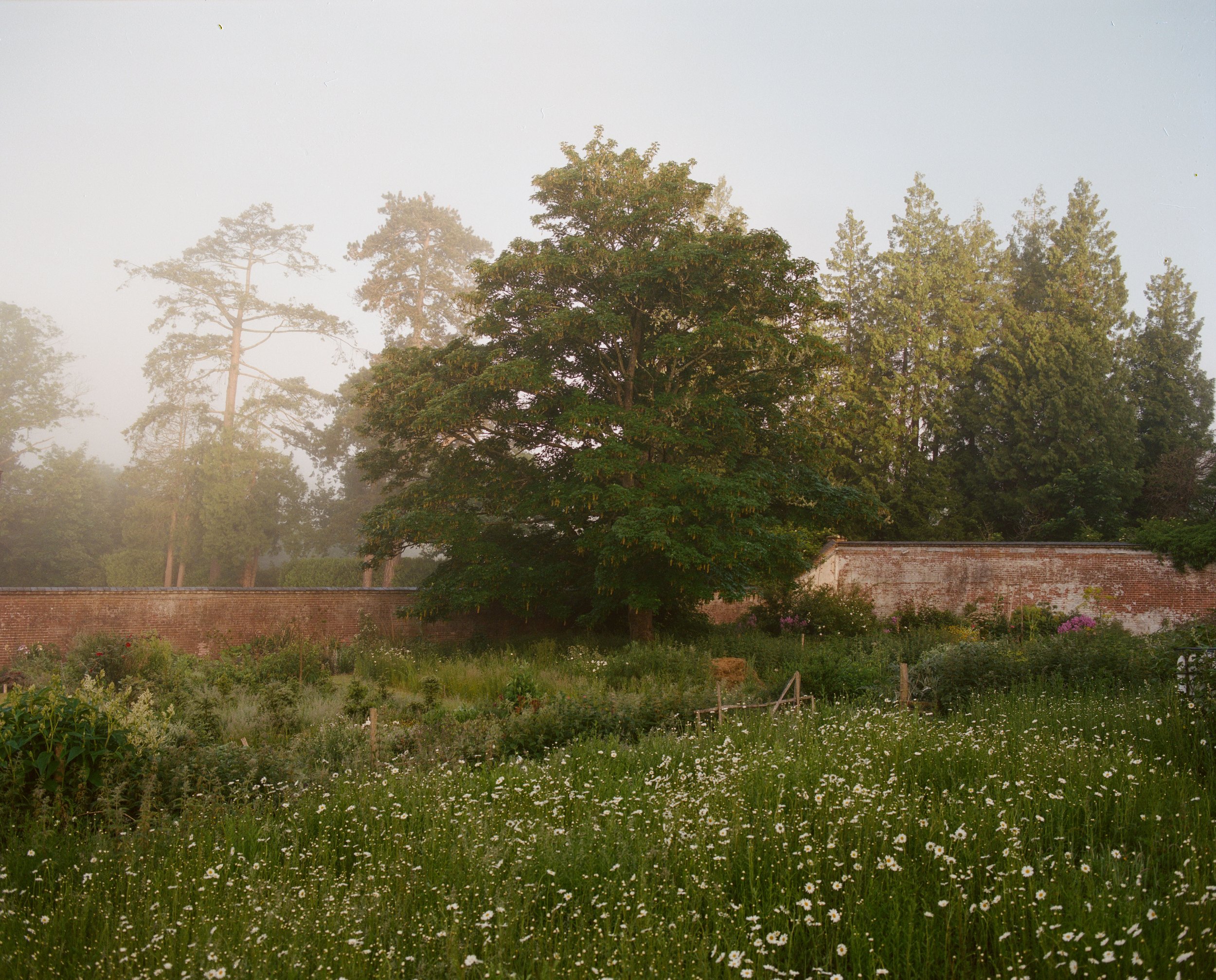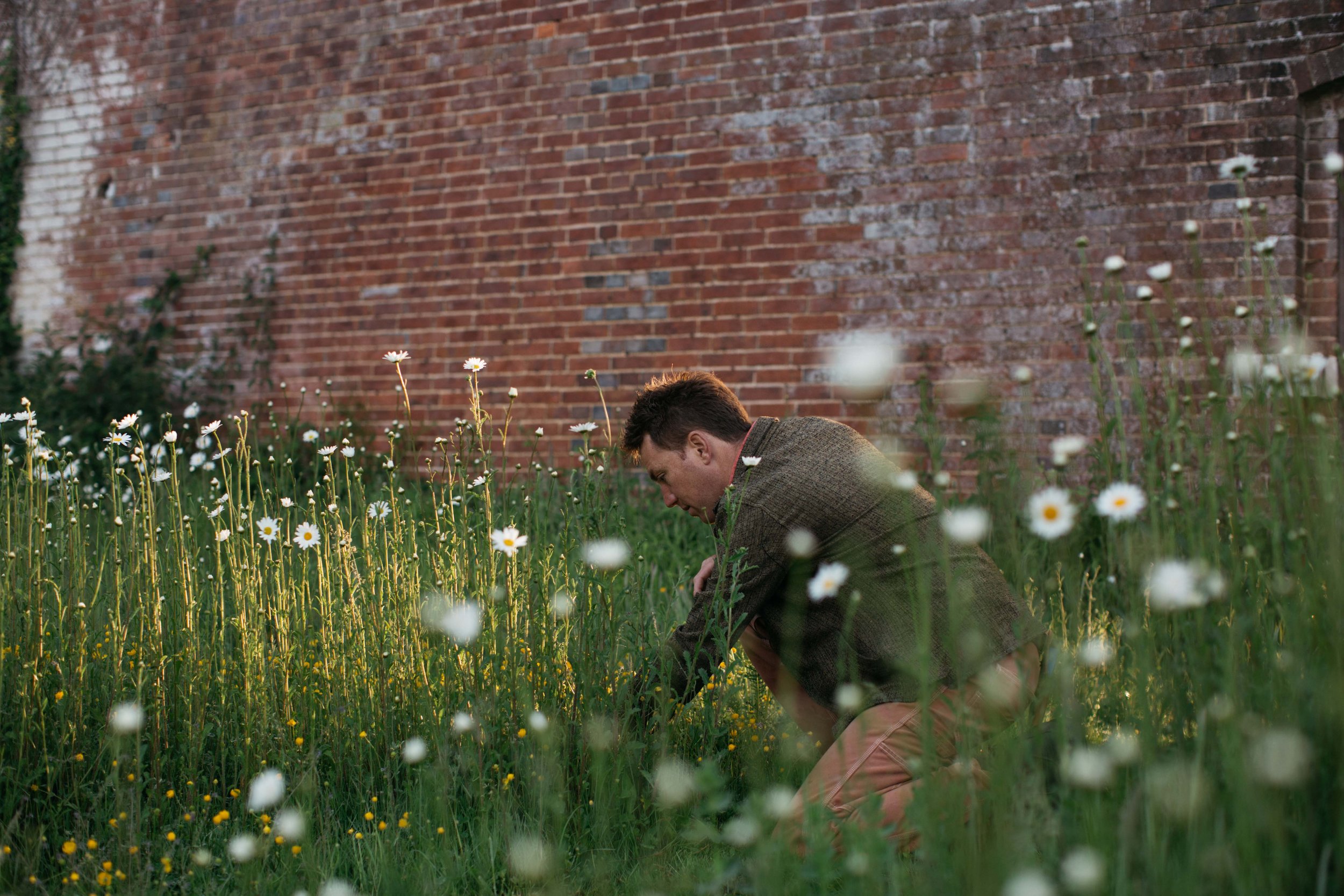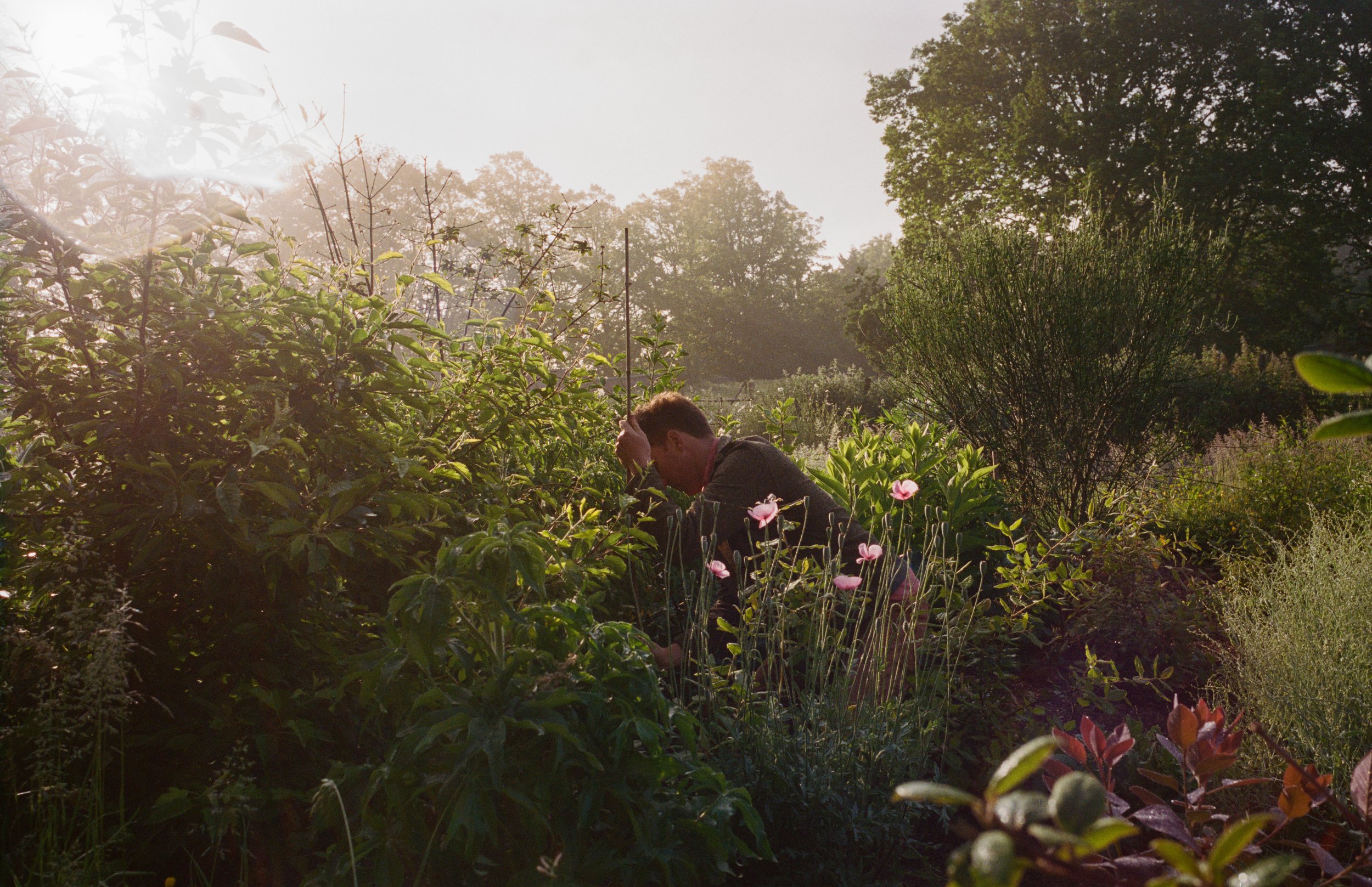
A gardener’s garden
Words by James Horner & Photography by Jessica MacCormick
It was a January day when I first saw the walled garden. My guide was a good friend and someone I had occasionally gardened beside for a couple of years. As we arrived under an avenue of bare-limbed lime trees, I could detect the crumbling walls of an old brick bothy. Behind a cage of buddleja, hart’s tongue ferns stuck out from pocked brickwork. A door in a high wall seemed bewitchingly small. I was keen with hope and excitement as we snapped open the lock, gave the door a little shove and entered over the thick grass underfoot.
The opportunity was clear to me. Here was a vacant old walled garden, fully enclosed and spanning two acres, cleared of its last generation of horticultural infrastructure. Gone was any trace of the layout of a previous garden. Only the presence of remnants of the long gone glasshouses lingered in lead flashing and whitewash paint on the south facing walls. The door had been closed some 20 years ago, and the place had been forgotten. A rest period occurred for the soil, several native trees seeded in and fully established themselves. A copse of five English oaks had germinated together following a mast year, and now clustered around the centre of the space. This new generation of oaks and a sole mighty sycamore had made themselves part of any future plan for the garden.



With its seclusion and productive history, I knew at once I had a privileged opportunity to make a garden that would be studious and fertile. A place to grow plants, a place to experiment and expand on my learning. At the time I had just completed a long, intense traineeship at Great Dixter in East Sussex, where for over three years I lived in the house and worked in the garden. While I was beginning to amass plants and jumped at every chance to take cuttings of special plants offered by revered gardeners I lived in a rented barn with no garden of my own. The unused space within the walled garden would become my own plot in which to immerse myself; to play and test ideas for planting, pruning, combinations and colour schemes. An undisturbed small world in which to attune my comprehension of the seasonal timings of plants, and further learn the practice of gardening. Dixter had taught me the discipline of observing the garden and inspired in me a profound curiosity for plants and their capabilities. I knew it was essential that I should continue for myself the culture of trialling plants, assessing their subtle differences and characteristics and making notes, all of which is vital to making better gardens.
The walled garden slopes gently down its length from south to north. At first I broke ground only on a plot the size of a tennis court. The soil was Sussex Wealden clay over sandstone and was severely compacted, possibly from a tractor driving back and forth flailing down late season vegetation, a routine I knew had been carried out for several years as a means of trying to stop the empty space turning to scrub. In that first spring I laboured enthusiastically with a mattock lifting and turning the anaerobic soils. I dumped on barrow after barrow of mushroom compost while listening to tales of the previous owners taking all the topsoil off site when they left. Rabbits had long since established burrows under a stretch of wall and so I had to fence off my plot. Restoring life to the soil was a journey which became essential learning for my practice. Training in one of the UK’s top gardens with its premier ‘dive in’, ‘black gold’ soil structure doesn’t altogether prepare you for encountering soils starved of oxygen. Unfazed by the effort, I revitalised that first patch in the first two years and in year three I expanded the cultivated area to a quarter parcel of the total space within the walled garden. That remains the scale of things today.





Gardening this roughly half acre space within the old walls of the garden remains a challenge and an invaluable part of my education as a gardener. Typically, I drive over to the walled garden on a Sunday. The limited time I can spend there impacts on the garden itself and, in organising it, I have to keep its purpose and function clearly in mind. The garden is thus dissected simply by broad mown grass paths and the beds are long and narrow. Most of the plants are arranged in rows and given space to grow with minimal competition. This allows each plant time to settle. I have lost many plants by attempting to cram them in amongst already established perennials. I soon realised I needed a more structured approach in order to trial each plant fairly. Once I feel I have grasped the key characteristics of a plant and found a method of increasing it I am then free to be liberal with it and there are small pockets of plant communities in the garden now, shrubs host scrambling clematis or perennial peas, and create dappled shade for a tapestry of saxifrage, primroses, cyclamen and snowdrops. My ideas meanwhile percolate gently amongst the order of stock plants.
Testing the suitability of plants to the principles I apply in my gardening is key to developing new approaches to planting and new ideas for gardens. I don’t use chemicals or fertilisers in the walled garden (just lots of organic matter) and have no additional irrigation infrastructure beyond initial watering to aid the establishment of new plants. In fact there is no mains water currently in the garden and my water has always been drawn off a large machinery barn roof down into a cubic meter water butt. Plants must possess vigour, climate hardiness and disease resilience even before being judged on visual merit. Whether I’m gardening to find the best philadelphus for small gardens, or trialling the existing forms of the Chilean guava berry for hardiness with the possibility to clip it as a small fruiting hedge, becoming familiar with and holding on to good plants is key to creating long lived planting. Recently I have felt the requirement to grow rarer small trees and large shrubs such as hydrangea aspera forms in the walled garden, giving them space and time to develop a strong juvenile habit. These are rootballed as one-metre tall specimens throughout the dormant season and transplanted into garden projects. There is little availability of such woody plant material in the nursery trade.




The cultivation of stock plants in rows randomly throws up surprising combinations which I would otherwise be less likely to envisage. All this creative freedom is hugely stimulating but also incredibly important for honing my skills as a specialist. Having a greater understanding of plants allows for fewer unsuccessful endeavours, which in turn saves effort and reduces waste within the work I do for clients and on large projects. Having my array of stock plants always to hand allows for ease of scheduling and diminishes the need to source plants and pay for delivery costs, packing materials, and even pots and potting soil as often during the dormant season I split perennials straight into border renovations.
Today the walled garden continues to have the dual purpose of being a playground and productive plot. Throughout the eight years I have gardened within its ragged walls I have never lost a sense of gratitude for its gifts of time and solitude to focus on the plants, the soil, the wildlife and the actions of gardening. It has become my constant as I have moved through creating many gardens. During a period when I was travelling frequently and working on gardens abroad, on returning I would briefly call in at the walled garden as it was on the route from Gatwick airport back home. On those short visits I would reacclimatise myself with where the season was in its garden year: had the peonies blown through, had substantial rain fallen in the time I was away. With eyes afresh in my touchstone garden I feel the greatest freedom to fully engross my curiosity, to delve down on knees and peer into the greater details of what’s going on. Only there could I engross myself in observing the behaviour of bees over a honeyed mass of euphorbia, or scoop up from a task enraptured by a sound of a daytime owl hoot in nearby trees. This wonderment for the natural world is what sparked my first interest in landscape and, soon after, gardens. Thus it is vital to keep a place where this fascination can rove and be freshly stimulated.
JH ~February 2022